Corsair AX1600i PSU Review
Why you can trust Tom's Hardware
Transient Response Tests
Advanced Transient Response Tests
For details on our transient response testing, please click here.
Ιn these tests, we monitor the AX1600i's response in several scenarios. First, a transient load (10A at +12V, 5A at 5V, 5A at 3.3V, and 0.5A at 5VSB) is applied for 200ms as the PSU works at 20 percent load. In the second scenario, it's hit by the same transient load while operating at 50 percent load.
In the next sets of tests, we increase the transient load on the major rails with a new configuration: 15A at +12V, 6A at 5V, 6A at 3.3V, and 0.5A at 5VSB. We also increase the load-changing repetition rate from 5 Hz (200ms) to 50 Hz (20ms). Again, this runs with the PSU operating at 20 and 50 percent load.
The last tests are even tougher. Although we keep the same loads, the load-changing repetition rate rises to 1 kHz (1ms).
In all of the tests, we use an oscilloscope to measure the voltage drops caused by the transient load. The voltages should remain within the ATX specification's regulation limits.
These tests are crucial because they simulate the transient loads a PSU is likely to handle (such as booting a RAID array or an instant 100 percent load of CPU/GPUs). We call these "Advanced Transient Response Tests," and they are designed to be very tough to master, especially for a PSU with a capacity of less than 500W.
Advanced Transient Response at 20 Percent – 200ms
| Voltage | Before | After | Change | Pass/Fail |
|---|---|---|---|---|
| 12V | 12.027V | 11.987V | 0.33% | Pass |
| 5V | 4.998V | 4.944V | 1.08% | Pass |
| 3.3V | 3.305V | 3.238V | 2.03% | Pass |
| 5VSB | 4.985V | 4.939V | 0.92% | Pass |
Advanced Transient Response at 20 Percent – 20ms
| Voltage | Before | After | Change | Pass/Fail |
|---|---|---|---|---|
| 12V | 12.027V | 11.969V | 0.48% | Pass |
| 5V | 5.000V | 4.935V | 1.30% | Pass |
| 3.3V | 3.305V | 3.225V | 2.42% | Pass |
| 5VSB | 4.987V | 4.923V | 1.28% | Pass |
Advanced Transient Response at 20 Percent – 1ms
| Voltage | Before | After | Change | Pass/Fail |
|---|---|---|---|---|
| 12V | 12.027V | 11.971V | 0.47% | Pass |
| 5V | 4.998V | 4.937V | 1.22% | Pass |
| 3.3V | 3.305V | 3.235V | 2.12% | Pass |
| 5VSB | 4.984V | 4.924V | 1.20% | Pass |
Advanced Transient Response at 50 Percent – 200ms
| Voltage | Before | After | Change | Pass/Fail |
|---|---|---|---|---|
| 12V | 12.023V | 11.986V | 0.31% | Pass |
| 5V | 4.990V | 4.936V | 1.08% | Pass |
| 3.3V | 3.300V | 3.233V | 2.03% | Pass |
| 5VSB | 4.971V | 4.921V | 1.01% | Pass |
Advanced Transient Response at 50 Percent – 20ms
| Voltage | Before | After | Change | Pass/Fail |
|---|---|---|---|---|
| 12V | 12.023V | 11.964V | 0.49% | Pass |
| 5V | 4.991V | 4.926V | 1.30% | Pass |
| 3.3V | 3.300V | 3.220V | 2.42% | Pass |
| 5VSB | 4.971V | 4.908V | 1.27% | Pass |
Advanced Transient Response at 50 Percent – 1ms
| Voltage | Before | After | Change | Pass/Fail |
|---|---|---|---|---|
| 12V | 12.023V | 11.973V | 0.42% | Pass |
| 5V | 4.989V | 4.923V | 1.32% | Pass |
| 3.3V | 3.299V | 3.226V | 2.21% | Pass |
| 5VSB | 4.970V | 4.905V | 1.31% | Pass |





The PSU's transient response is superb on every rail. The only platform that performs as well is Super Flower's mighty Leadex. But it can't compete against the AX1600i in comparisons of efficiency or load regulation.
Get Tom's Hardware's best news and in-depth reviews, straight to your inbox.
Here are the oscilloscope screenshots we took during Advanced Transient Response Testing:
Transient Response At 20 Percent Load – 200ms


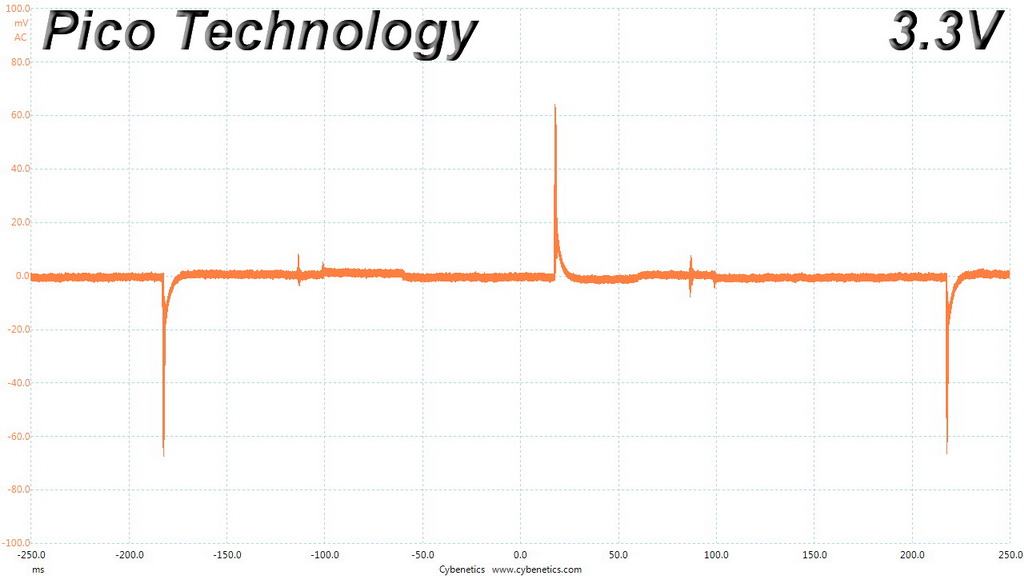

Transient Response At 20 Percent Load – 20ms




Transient Response At 20 Percent Load – 1ms




Transient Response At 50 Percent Load – 200ms


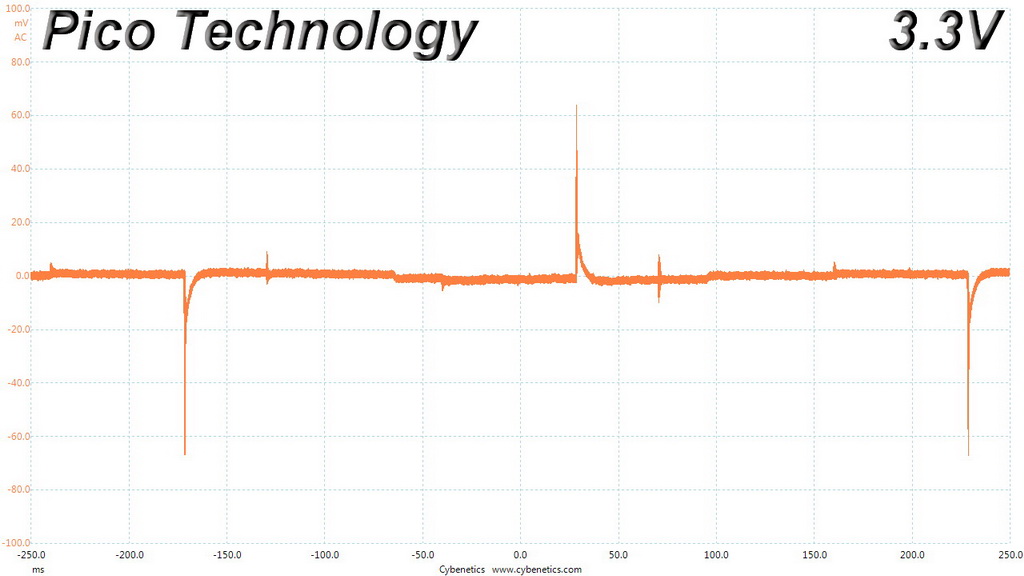

Transient Response At 50 Percent Load – 20ms


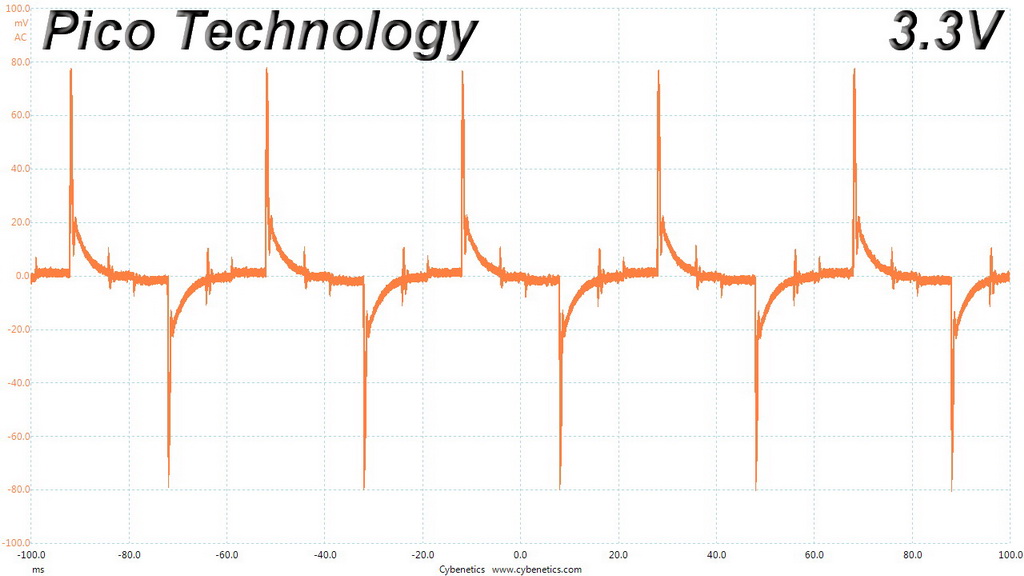
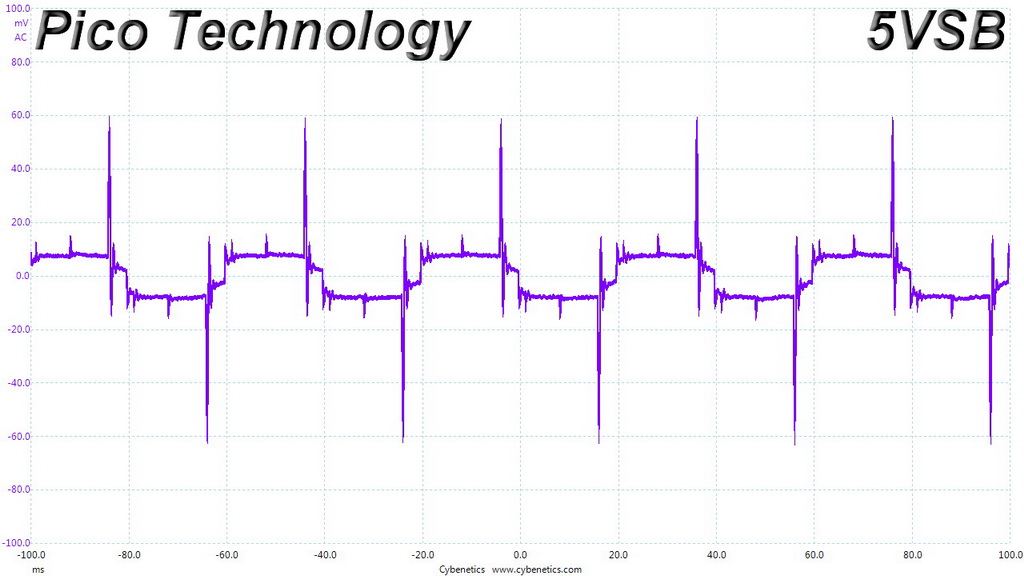
Transient Response At 50 Percent Load – 1ms
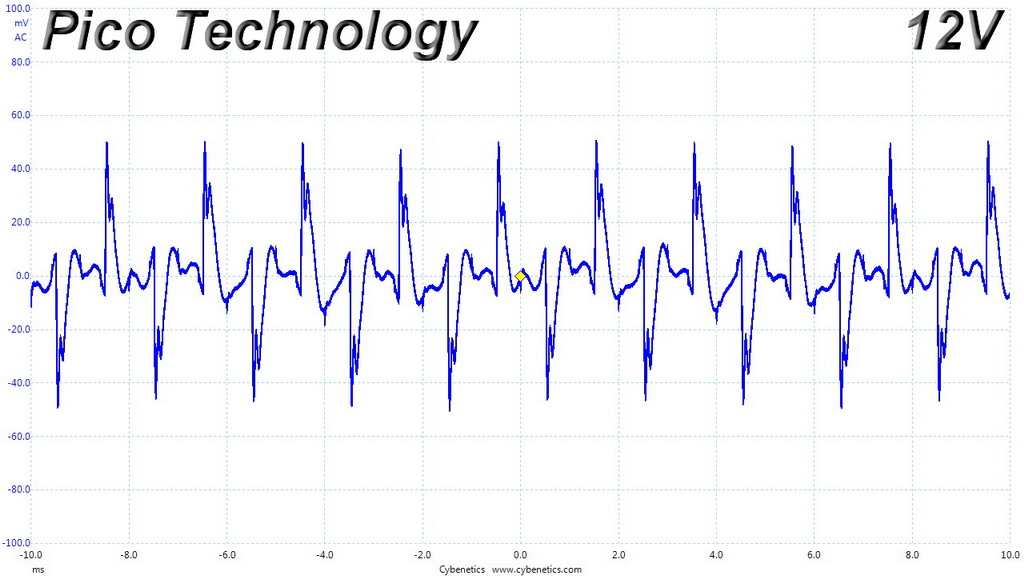



Turn-On Transient Tests
In the next set of tests, we measured the AX1600i's response in simpler transient load scenarios—during its power-on phase.
For our first measurement, we turned the AX1600i off, dialed in the maximum current the 5VSB rail could output, and switched the PSU back on. In the second test, we dialed the maximum load the +12V rail could handle and started the 1600W supply while it was in standby mode. In the last test, while the PSU was completely switched off (we cut off the power or switched the PSU off), we dialed the maximum load the +12V rail could handle before switching it back on from the loader and restoring power. The ATX specification states that recorded spikes on all rails should not exceed 10 percent of their nominal values (+10 percent for 12V is 13.2V, and 5.5 V for 5V).


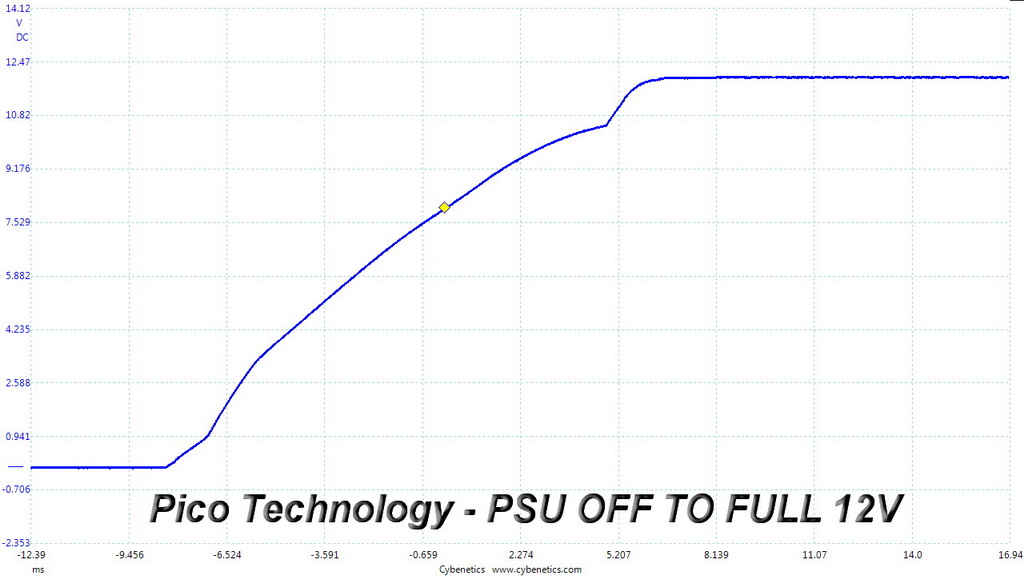
There are no spikes or voltage overshoots. The results are just perfect.
MORE: Best Power Supplies
MORE: How We Test Power Supplies
MORE: All Power Supply Content
Current page: Transient Response Tests
Prev Page Cross-Load Tests & Infrared Images Next Page Ripple Measurements
Aris Mpitziopoulos is a contributing editor at Tom's Hardware, covering PSUs.
-
Quaddro all of we need is 500w class digital titanium++ psu with this advance technology..Reply
Well, pc is much more efficient right now..
I wonder how many people will use it anyway... -
Aris_Mp Videos working fine here.Reply
PCs are more efficient, however graphics cards once pushed are not and many users tend to overclock their GPUs. Moreover, those units are intended for multi-GPU systems. -
SoerenHedemand Do you do you fan and noise measurements with 110V or 220V? That should make a difference in this case at least.Reply -
Aris_Mp Reply20574970 said:Do you do you fan and noise measurements with 110V or 220V? That should make a difference in this case at least.
115V but I also take noise measurements with 230V because of Cybenetics.
115V: 23.25 dB(A)
230V: 23.29 dB(A)
-
SoerenHedemand Specifically at what point does it change from passive to active cooling using either 110V or 220V?Reply -
ptlin.ece90g Primary DSC should be NXP Freescale MC56F8236Reply
Secondary DSC is Texas Instruments UCD3138064A